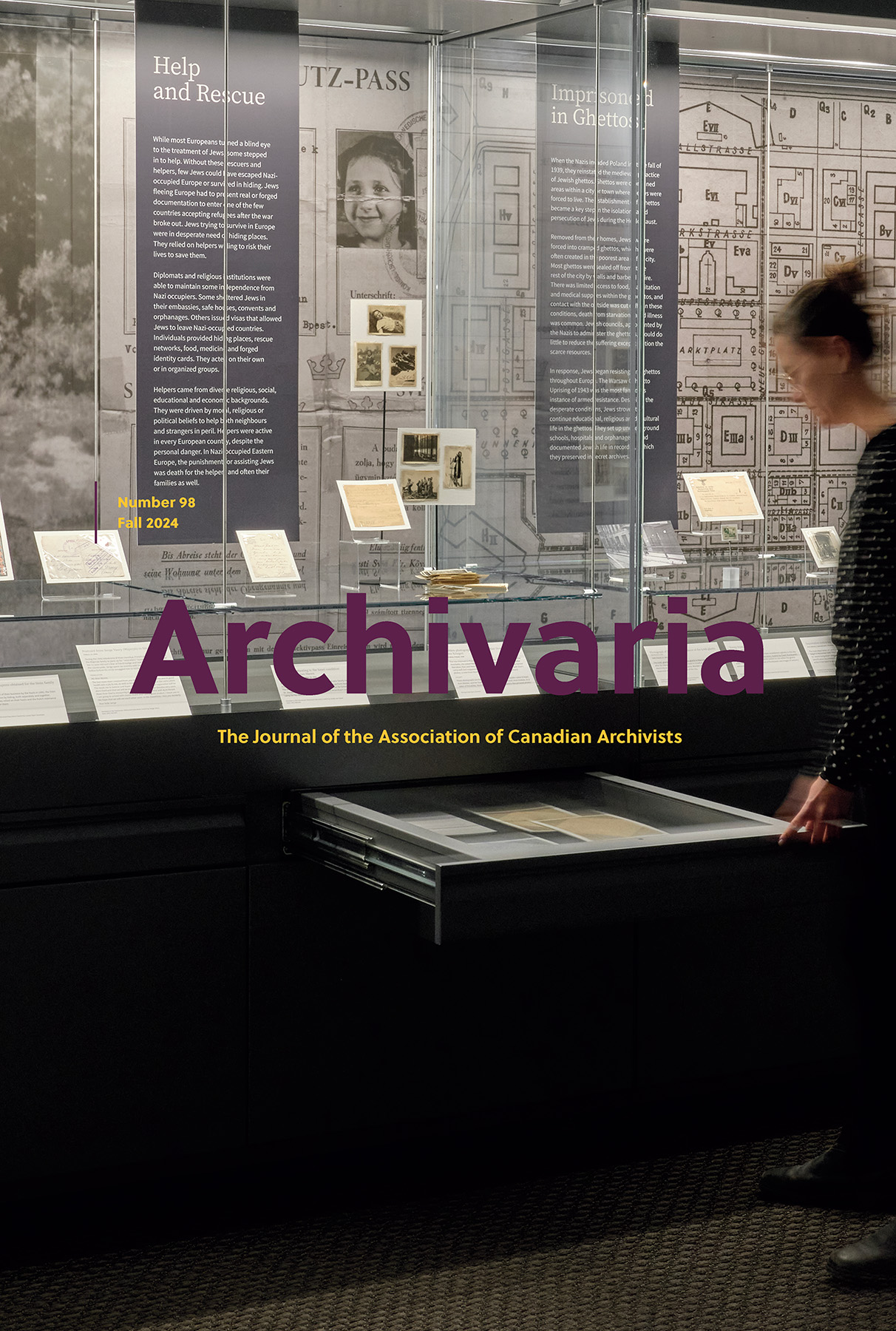The VHEC is located on the lower floor of the Jewish Community Centre of Greater Vancouver. A spiral staircase leads to a brightly lit foyer before the entrance doors to the VHEC. On a concave wall facing the entrance, a colourful mural promotes the Age of Influence exhibition. The mural depicts a German vacation advertisement which, like all the material in the exhibition, can be found in the VHEC archives. The mural is featured as a talking point during exhibition tours, with the intention that guests will be prompted to reflect and think about their emotional and critical responses to the painting. Age of Influence, installed along the right-hand wall of the VHEC exhibition space, is presented as a companion piece to the larger exhibition In Focus: The Holocaust through the VHEC Collection. The Age of Influence exhibition focuses on propaganda techniques exploited by the Nazis in targeting German children and teens. Designed as a guided tour for students between the ages of 10 and 17, Age of Influence uses archival material to frame discussion questions and activities and aims to inspire students to rethink their assumptions about propaganda. Video testimonies from survivors convey a respect and reverence for Jewish voices from the past and provide a lived context that grounds the archival materials, inviting the viewer to face the realities of systematic oppression. For archivists, Age of Influence is an intriguing exhibition to study, as it brings up questions and concerns about managing archival collections that contain problematic and potentially harmful material. As an archivist (or curator), it can be challenging to cope with the responsibility toward both survivors and modern researchers or patrons who may be seeing the material out of context. This exhibition demonstrates how the VHEC has chosen to ethically present its holdings, using them for educational purposes while still realistically portraying the dangerous and at times horrific nature of the records. The opening and closing portions of the exhibition draw focus away from archival sources and ask the audience to reflect on what they have witnessed. The opening uses a painting of a countryside (a poster used to present an ideal image of Heimat, or homeland) to prompt viewers to question their assumptions about what constitutes propaganda, how they expect it to appear, what purposes it may have, and to whom it is presented. The closing section (see figure 2), presents an exercise for self-critique and broader analysis, asking students how they interpret and fact-check information. These activities bookend the bulk of the exhibition, a series of thematic collections of curated archival material. The exhibit includes sections on Wandervogel outdoor youth groups, youth magazines, gender roles, and mass-media promotional material (e.g., cigarette cards), among others. Each section explores a variety of propaganda techniques – including manipulation; appeals to a sense of belonging; discrimination; othering; and the use of technologies such as photography, film, and printing – in illustrating how the Nazi party positioned itself as the voice for a new generation. The visible, tangible reality of the archival objects serves as historic grounding and signifies how relevant the issues still are in the modern day. Youth magazines that play on adolescent yearnings for adventure, belonging, and purpose are easily comparable to online communities today. Gender roles are articulated through idealized images of citizens participating in traditionally gendered careers and activities. Women are shown taking care of the home, while men are shown adventuring or boxing – outlining an individual’s future just as our society continues to do, regardless of how outward expressions of gender may change. As expected, racial purity looms large …
Age of Influence: Youth & Nazi Propaganda. Vancouver Holocaust Education Centre, Vancouver, British Columbia. Open from March 15, 2023. Curated by Tessa Coutu and Franziska Schurr, Exhibition developed by Lise Kirchner
…plus d’informations
Andres Resto-Spotts
Records and Information Lead, United Church of Canada
L’accès à cet article est réservé aux abonnés. Seuls les 600 premiers mots du texte seront affichés.
Options d’accès :
via un accès institutionnel. Si vous êtes membre de l’une des 1200 bibliothèques abonnées ou partenaires d’Érudit (bibliothèques universitaires et collégiales, bibliothèques publiques, centres de recherche, etc.), vous pouvez vous connecter au portail de ressources numériques de votre bibliothèque. Si votre institution n’est pas abonnée, vous pouvez lui faire part de votre intérêt pour Érudit et cette revue en cliquant sur le bouton “Options d’accès”.
via un accès individuel. Certaines revues proposent un abonnement individuel numérique. Connectez-vous si vous possédez déjà un abonnement, ou cliquez sur le bouton “Options d’accès” pour obtenir plus d’informations sur l’abonnement individuel.
Dans le cadre de l’engagement d’Érudit en faveur du libre accès, seuls les derniers numéros de cette revue sont sous restriction. L’ensemble des numéros antérieurs est consultable librement sur la plateforme.
Options d’accès

